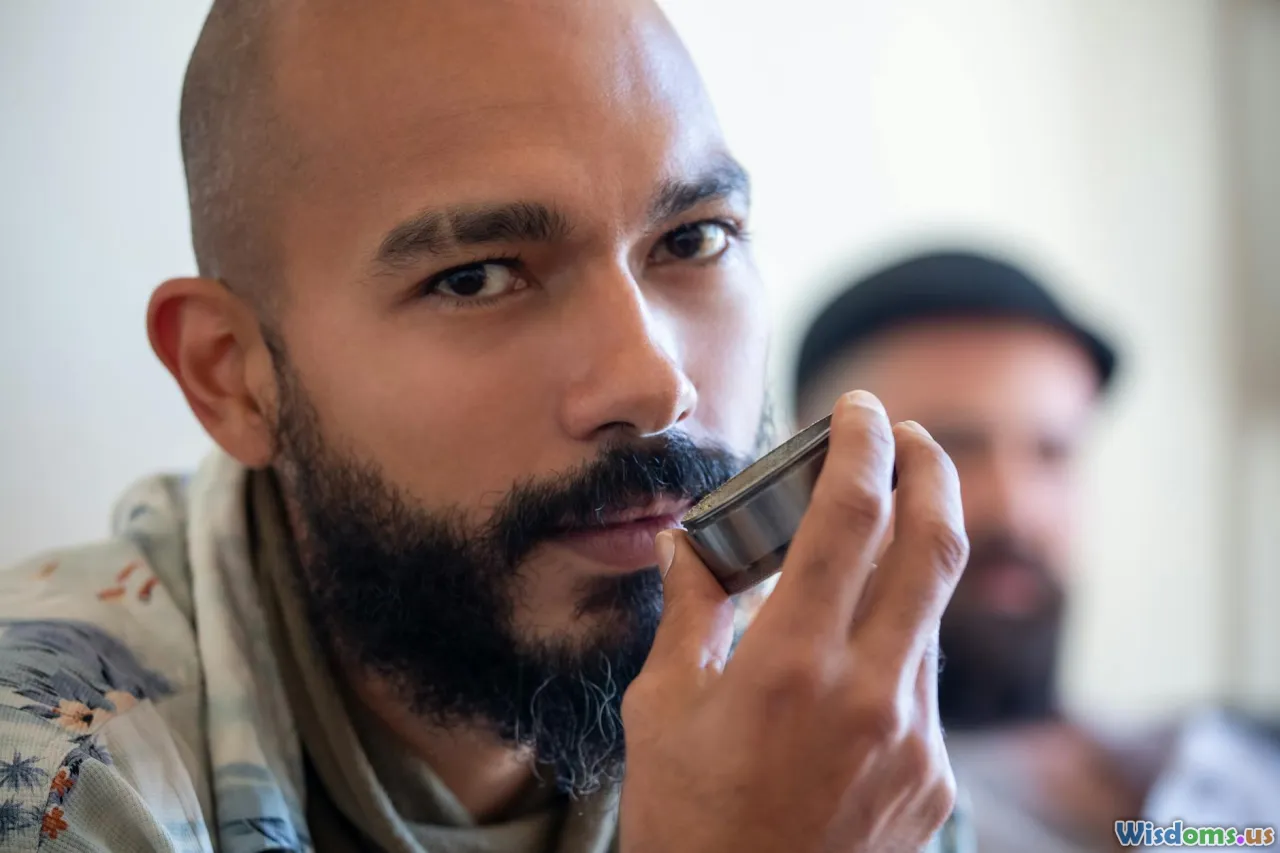
Is Technology Hurting Intimate Conversations Between Partners
13 min read Explore if technology impacts depth and quality of intimate conversations between partners, with examples and practical solutions for healthier digital communication. (0 Reviews)
Is Technology Hurting Intimate Conversations Between Partners?
In the glow of smartphone screens and the hum of instant notifications, a quiet transformation is unfolding in our relationships. Couples, whether dating or married, increasingly navigate their most meaningful conversations with devices close at hand. While technology offers bridges across distances, there's an intensifying concern: Is it also building walls in our private lives? Let’s delve—without nostalgia or paranoia—into how the digital age is shaping, and potentially straining, the intimate dialogues that bind us.
Digital Distractions in Daily Dialogues

One of the most pervasive challenges modern couples face is digital distraction. According to Pew Research Center, nearly 51% of adults report being regularly distracted by their mobile devices while spending time with significant others. This isn’t merely glancing down to check a text; it’s a habitual attention split that transforms conversations from meaningful exchanges to background noise.
Consider a typical evening. You and your partner sit down for dinner. As the conversation drifts deeper, a notification from work draws one of you back to your screen. The flow is interrupted, turning an intimate moment into an exercise in patience.
Even technology’s subtler forms can intrude: smartwatch buzzes, Alexa reminders, and the silent expectation to be perpetually available online. The mere presence of a device on the table—the so-called "phone face-down effect"—can reduce the quality of in-person interaction, as shown in a University of Essex study.
Insights & Tips:
- Set boundaries: Establish tech-free times or zones (like during meals or in the bedroom) to restore natural conversational rhythms.
- Single-task at home: Multitasking, especially with devices, drastically reduces conversational depth and emotional responsiveness.
The Shift from Verbal to Virtual

Communication is increasingly mediated through screens. Messaging apps, social media DMs, and GIF exchanges replace longer verbal conversations. While technology enables connections across busy schedules or long distances, it sometimes chips away at verbal nuance and emotional richness.
Texting may help clarify simple logistics, but it often fails at conveying tone, empathy, or nuance. Imagine texting “K.” to your partner after a lengthy message; it may read as curt or disengaged even if not intended that way.
On the positive side, platforms like FaceTime or WhatsApp video calls can keep long-distance couples emotionally attuned, but even these can’t fully replicate the chemistry of a physical conversation—eye contact, touch, and body language.
Comparison Table: Conversation Modes
| Mode | Primary Strength | Common Pitfalls |
|---|---|---|
| In-person | Nuance, empathy | Can be disrupted by devices |
| Text messaging | Quick, convenient | Misinterpretations, brevity |
| Video/voice call | Richer connection | Tech interruptions, fatigue |
| Social media | Bridging gaps | Superficial, easily distracted |
Technology’s Hidden Costs: Emotional Distance

The appeal of constant connectivity paradoxically fosters emotional distance when overused. Psychologists describe "phubbing"—the act of snubbing your partner for your phone—as a significant trigger for feelings of exclusion and diminished relationship satisfaction. In a Baylor University survey, 46% of respondents said they’ve been phubbed by a partner, leading nearly a quarter to report more conflict as a result.
What lies beneath is not the device itself but an unspoken message: "Something else is more important than you right now." Over time, repeated micro-neglect, even as minor as scrolling through social media while your partner talks, can erode intimacy.
Practical Example:
Ana and Miguel, married for eight years, noticed most arguments started when one absentmindedly checked messages. Recognizing this, they did a "device detox"—leaving phones in another room after 8 p.m.—and anxiety around missed texts diminished as their face-to-face talks deepened.
Actionable Advice:
- Discuss boundaries openly: Agree on respectful device use, acknowledging moments where undivided attention is necessary.
- Ritualize connection: Establish tech-free date nights or morning coffee conversations as non-negotiable routines.
When Technology Becomes a Shield

For some, technology is a safe refuge; for others, it doubles as an emotional shield. Instead of tackling a tough issue, it’s all too tempting for partners to retreat into scrolling Twitter or reading emails. This avoidance, through digital means, puts off important discussions — sometimes indefinitely.
Harvard psychologist Sherry Turkle highlights that such "alone togetherness"—sharing space but being engaged elsewhere digitally—prevents the uncomfortable but necessary work of real emotional intimacy.
Signs Technology Is Acting As a Shield:
- Avoidance of in-depth conversations, often accompanied by visible device use.
- Disagreements are paused for "a quick text" and never fully resumed.
- Discomfort with silence leads to compulsive device-checking rather than engagement with a partner.
How to Tackle Shielding:
- Name it: Call out the avoidance when you recognize it, compassionately (e.g. "Can we talk about this without our phones in the room?").
- Check for patterns: Reflect together on whether certain topics typically trigger digital detours, and why.
Positive Roles: When Technology Enhances Intimacy

While it’s tempting to vilify technology, it’s also a force for connection—especially for couples with tough schedules, long-distance arrangements, or unique communication needs. Apps designed for couples, shared calendars, and daily check-ins can become scaffolding for emotional intimacy.
Couples separated by travel or military service, for example, now maintain regular video dinners or shared photo diaries—opportunities unseen just a decade ago. Similarly, partners can nurture intimacy by sending spontaneous love notes, recording video messages, or sharing playlists that carry meaning.
Apps like Tuned and Between are built with couples in mind, allowing private spaces for sharing feelings and building a virtual scrapbook of daily life together.
Ways Technology Can Deepen Conversations:
- Prompting questions apps (e.g., Paired) encourage reflective dialogues couples may not consider on their own.
- Shared journals or photo albums recall meaningful memories and provide conversational springboards.
- Support through crises: Some partners rely on messaging as an emotional lifeline during work emergencies, serious illness, or family distance.
Tips for Protecting Intimate Communication in a Digital Age

Technology isn’t going away, nor should it. The challenge is learning to harness it as a tool, not a barrier.
Actionable Tips:
- Schedule sacred tech-free times: Meals, bedtime, and reunions after work are natural moments to reinforce undivided attention.
- Design communication rituals: Rituals—such as night walks with phones left behind, or weekly digital sabbaths—refresh in-person bond-building.
- Audit your habits: Check whether device use during conversations is additive or subtractive. Apps like Moment or Digital Wellbeing can identify tendencies to scroll during couple time.
- Prioritize curiosity: Ask open-ended questions face-to-face. Such curiosity can't be algorithmically served up by feeds.
- Leverage tech wisely: Use messaging to supplement, not substitute, deeper talks. Send a "thinking of you" message, but bring tough issues to the table in person when possible.
Real Stories: Couples Reclaiming Conversation

David and Charlotte, recently engaged, noticed dinner conversations were flattening under the shadow of their notification-laden phones. They embarked on a "technology curfew"—no devices aloud after 9 p.m.—and rediscovered the kind of laughter and openness from the early days of their relationship.
Hannah and Priya, in a long-distance relationship, coordinated nightly video calls but made a conscious choice to go "voice-only" once a week. The absence of screens, oddly, deepened their trust. As Priya shared: "Without the temptation to check messages, we find ourselves really listening again."
These are small changes, but in aggregate, they build stronger habits. Reclaiming a few moments each day where digital tools are set aside isn’t regressive; it’s radical maintenance for modern partnerships.
Technology, in its dazzling progress, tugs us both closer and further apart. The difference lies not just in the devices we carry but in the intentions with which we use them. By acknowledging both the risk and the power embedded in our gadgets, couples can renew the art of conversation—making space for both words and silence, together. And isn’t that, after all, the most intimate connection of all?
Rate the Post
User Reviews
Other posts in Communication in Relationships
Popular Posts


















